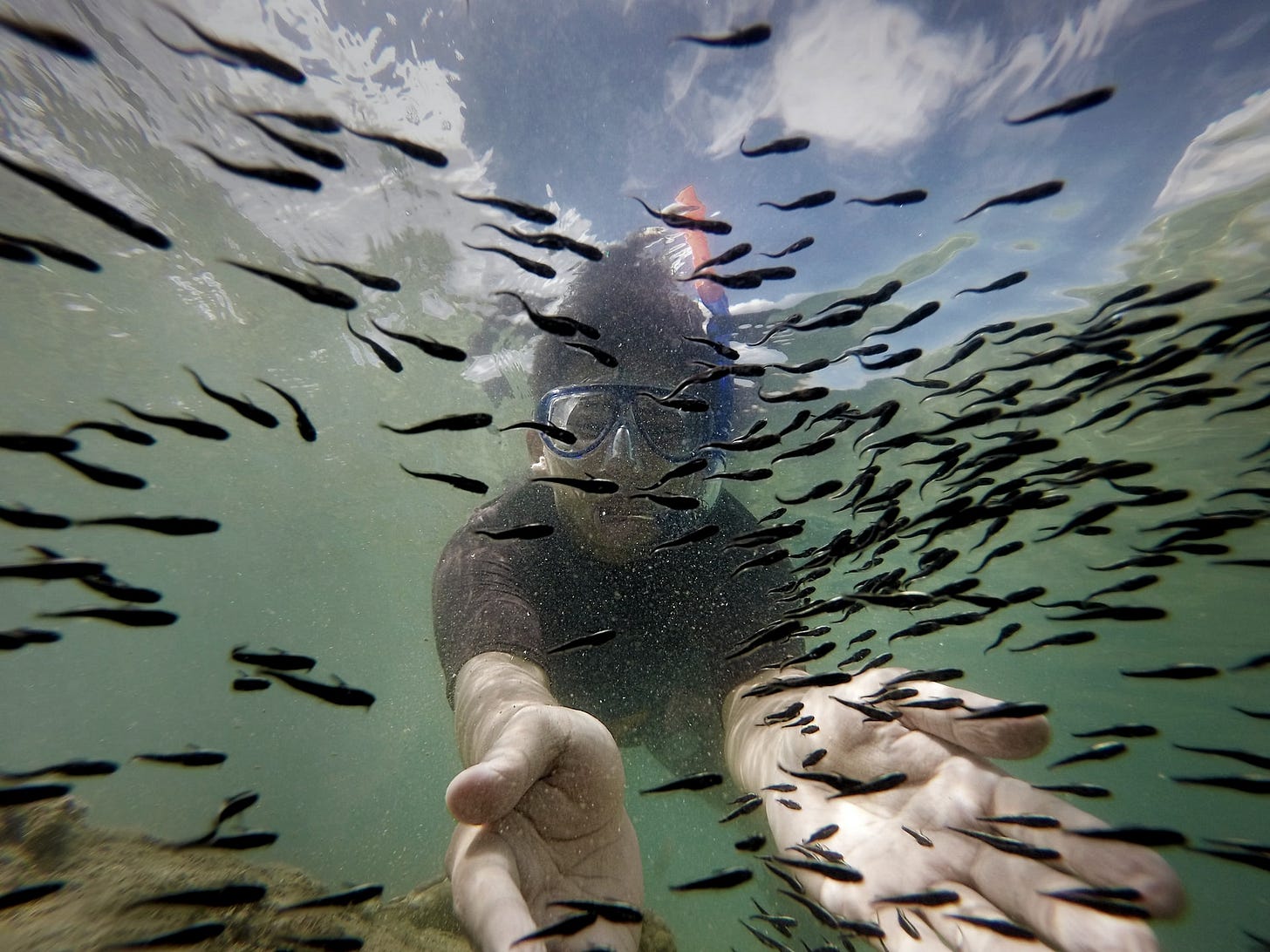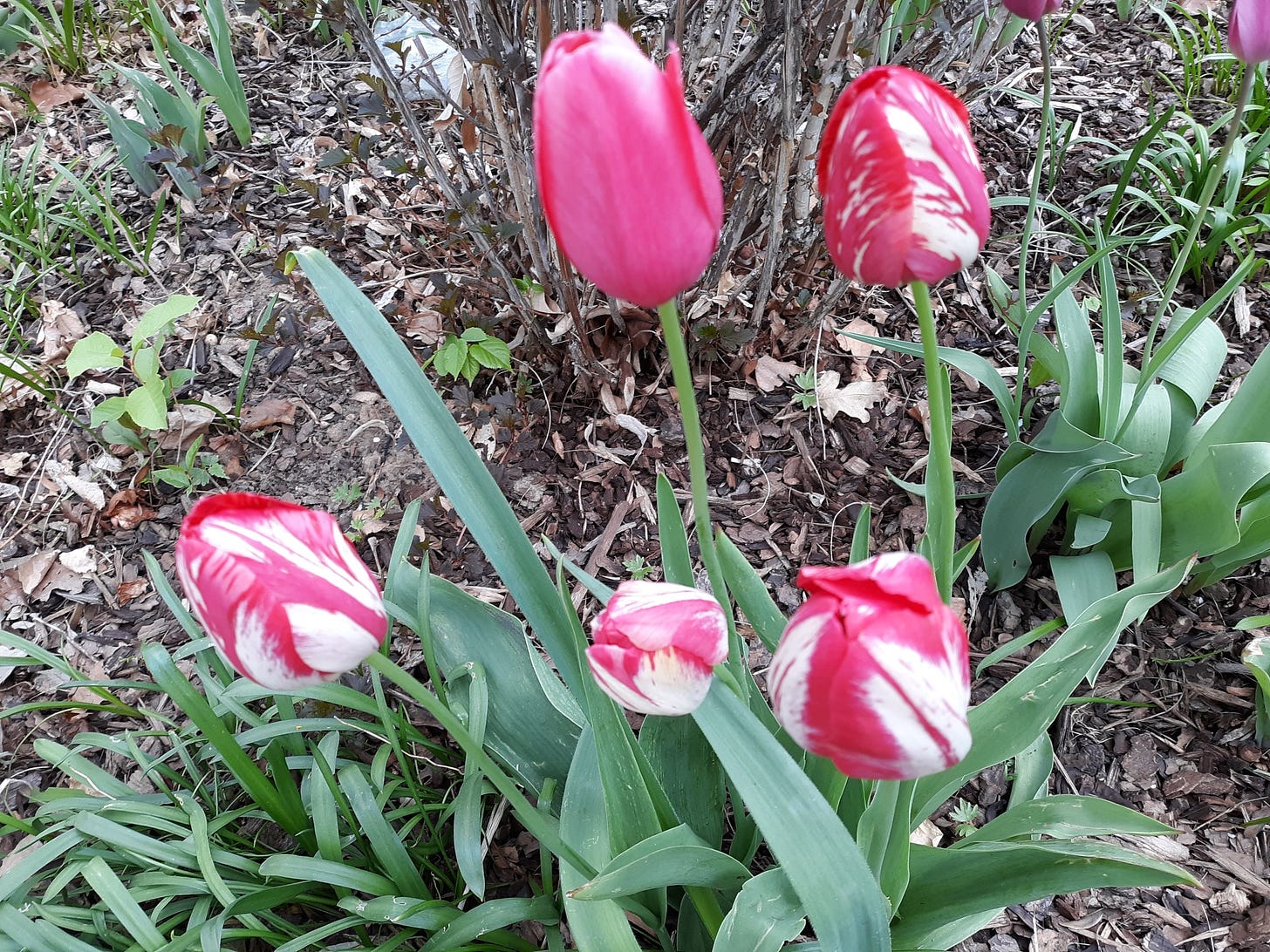The Evolving Rights of Wild Animals
Rights of Nature / Interspecies hunting / Defining sentient beings
You’re at Mother E, a free newsletter that’s telling the stories about our interactions with other species and what we can learn from them. Sign up below to receive the newsletter every other Sunday.
This issue features three articles I’ve been reading about the evolving nature of the rights of animals, trees, and plants, as well as new research showing surprising interspecies hunting in the ocean. Enjoy!
If you missed the last Mother E issue, here it is: Madame Arachnid in the Moonlight
THE WORLD IS CHANGING in subtle and not-so-subtle ways. One of the changing topics I’m tracking is people’s understanding and empathy towards other species. It’s a reflection of how we treat the planet in general.
Our knowledge of other species is evolving more rapidly. Scientists, researchers, and citizen observers are learning more about what makes a species unique, what its talents and special attributes are, and how that plant, animal, fish, tree, invertebrate, etc. fits into the bigger picture of helping preserve life on Earth.
In this newsletter, I’m sharing three unique articles that touch on this topic.
Rights of Nature— can a lake gain protection by going to court?
There is a recent movement to grant more rights to animals, plants, and their habitats. This Rights of Nature or “RoN” movement has been slowly gaining traction. What it seeks to do is give nature “the right to exist, persist, maintain and regenerate its vital cycles” according to the Global Alliance for the Rights of Nature (GARN).
Dozens of successful cases of Rights of Nature have become law, according to the Community Environmental Legal Defense Fund (CELDF). Ecosystems, waterways, and even species now enjoy more rights to exist and flourish.
In reality, we don’t “give” rights to other species or ecosystems, as they already have those rights, but within the human legal system, it’s a start for protection from human abuses.
Here are some adoptions of Rights of Nature laws:
1. The nation of Ecuador has written into its constitution a Rights of Nature provision.
2. The Rights of Lake Erie Ecosystem protects Lake Erie, its water, and all the organisms living within its watershed.
3. Wild Rice, or “Manoomin” in the White Earth band of Ojibwe language, is the first plant species to have legal rights in the world.
4. The Yurok Native American group of Northern California has secured “personhood” legal rights for the Klamath River.
Now ocean creatures are being considered for protection. The following article questions whether marine species should have the right to own the high seas. That question is under consideration by the United Nations this year as a means to halt marine biodiversity loss.
Http://oceans.nautil.us/article/669/should-marine-species-own-the-high-seas
Every whale and shark and sea turtle, every tuna and tooth fish, every octopus and even every salp and sea urchin and anemone, has a right to own their part of the ocean.
“Should Marine Species Own the High Seas?” By Karen Bradshaw @Nautilus /Oceans
The proposal doesn’t yet have broad support, as some nations worry it would interfere with their fish harvesting practices, which include bycatch of many other species. For more on ocean over-fishing, view the film Seaspiracy.
Whatever the outcome of this UN decision, the fact that marine species’ rights are being considered is a momentous shift in attitude from our anthropocentric belief that all other species are here just to be extracted or used by us.
An octopus and a grouper fish learn to hunt together
The next article is a curiously fascinating story of two different species, who evolved about 500 million years apart, learning how to hunt together when food is scarce.
Divers and researchers noticed the octopus and grouper fish swimming together and trying out different hunting tactics, with the octopus blocking an escape hole while the grouper fish went in the front entrance and got the prey. They noticed multiple instances of octopuses hunting with various groupers.
Crossing a phylum gap like this is almost like a human talking to a snail.
Daniel Bailey, Marine Biologist at University College London
As our warming and changing world loses more species, creatures will have a harder time finding food. Using intelligence and learning to create new partnerships for hunting and food procurement will be a necessary survival skill.
There is so much to gain by fostering cooperation over fierce competition. Just ask the octopus. If you missed the Mother E issue with the documentary trailer about My Octopus Teacher, here it is.
Which animals do we recognize as having feelings?
The next article is about a recent United Kingdom bill that recognizes vertebrate animals as sentient beings, with more rights attached to that status. But it also poses the question, what about insects, bees, snails, and non-vertebrates? Are they sentient too?
https://www.theguardian.com/commentisfree/2021/may/16/animals-feel-humans-evidence-sentient
Look a dog in the eye and a conscious being looks back. A being that feels hunger, thirst, warmth, cold, fear, comfort, pleasure, pain, joy…. The same is true of any mammal. You cannot watch rats playing hide and seek and doubt that they have feelings— that they are sentient creatures. But as animals become more distant from us in evolutionary terms, some doubt begins to creep in.
Jonathan Birch, The Guardian
What’s Ecosophy?
We humans are now thinking more about these existential questions. It’s given rise to the growing field of eco-philosophy, or “ecosophy” where we consider the intrinsic value of species, the moral status of animals and plants, and how to create ecological harmony.
Ecosophy may sound like a modern topic, but it’s actually a return to older ways of thinking and indigenous practices that consider all species as having a kinship to each other. That older set of beliefs fostered a way of living that promoted mutual respect and created a balance in the environment, something we are lacking today at a societal level.
How do we build better awareness to change our society’s beliefs? Expand more interaction with the natural world, get children playing outside more, and help people recognize that other species have a deep intelligence that has evolved over hundreds of millions of years. And finally, we all need to slow down, take the time to look into the heart of a flower, or see the small but significant life that passes around us every day.
As I walked around a Colorado neighborhood recently, I marveled at the musical spring birdsong, the flash of a yellow and orange Western Tanager, the dozens of multi-hued tulips blooming in front yards, and the deciduous trees pushing out more green leaves each day.
In the sky, brilliant white cumulus clouds piled up over the Rockies. Down at ground level, a stray hen escaped from a back yard and helpful neighbors steered her back. Life unfolded at an unhurried yet purposeful pace. These walks were a gift of spring.
I was reminded of the Peruvian author and indigenous leader, Arkan Lushwalla, who said “Life offers us gifts every day. Don’t turn them away. Open your hands and receive them.”
He also added that every gift brings an obligation for reciprocity. It’s our turn to offer something back to Mother Earth. Making the nurturing mutual is the start of any good relationship and a prerequisite for healing our world.
To reach me, reply to the email you were sent as a subscriber. Or, leave a comment by using the button above which takes you to the website version of this article. Scroll to the bottom comment section.
Happy Spring, and thanks for sharing Mother E with your social media channels or a friend.
Robin A.




